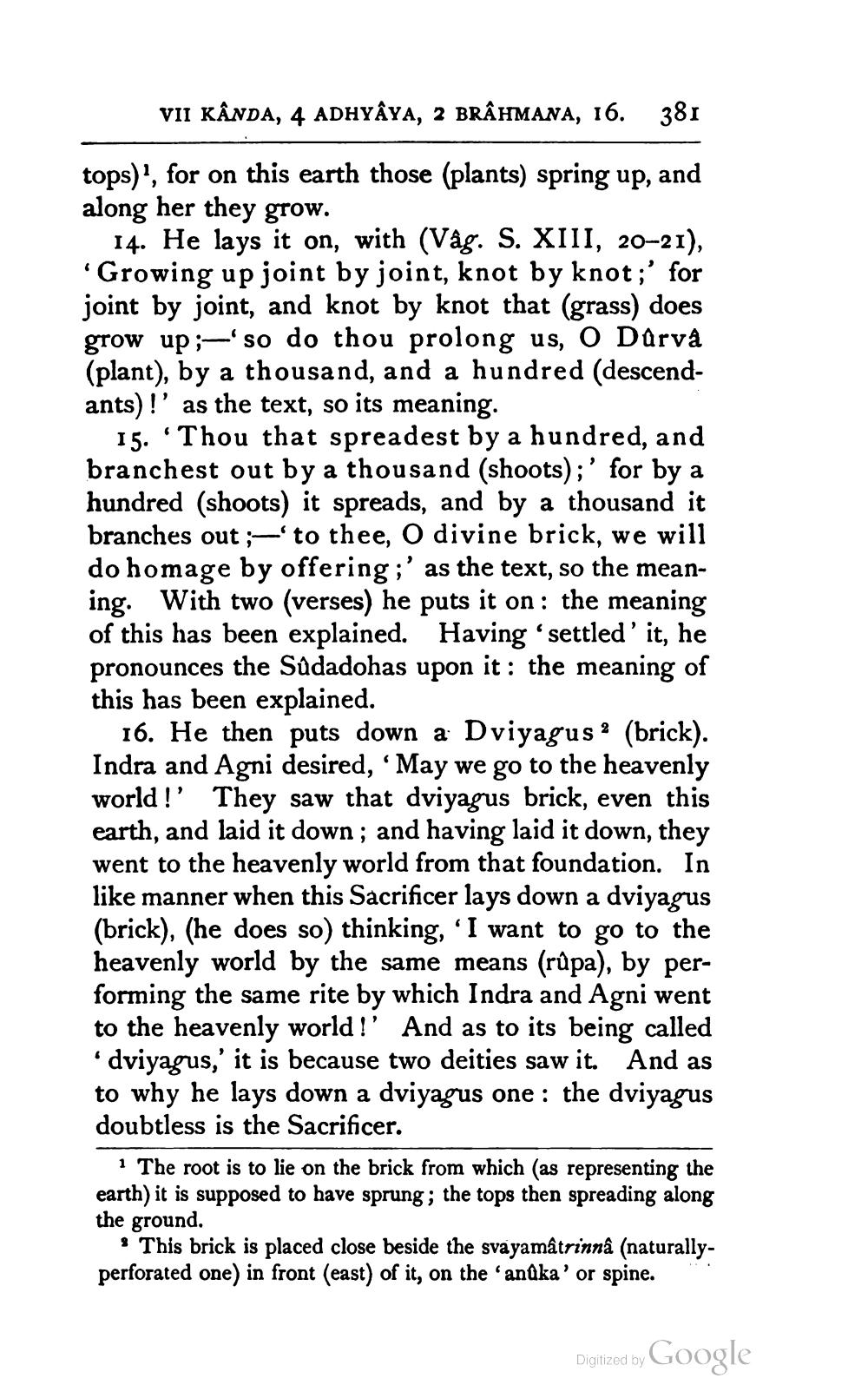________________
VII KANDA, 4 ADHYAYA, 2 BRAHMANA, 16. 381
tops)', for on this earth those (plants) spring up, and along her they grow.
14. He lays it on, with (Vâg. S. XIII, 20-21), 'Growing up joint by joint, knot by knot;' for joint by joint, and knot by knot that (grass) does grow up; 'so do thou prolong us, O Dûrvâ (plant), by a thousand, and a hundred (descendants)!' as the text, so its meaning.
15. Thou that spreadest by a hundred, and branchest out by a thousand (shoots);' for by a hundred (shoots) it spreads, and by a thousand it branches out ;-' to thee, O divine brick, we will do homage by offering;' as the text, so the meaning. With two (verses) he puts it on the meaning of this has been explained. Having 'settled' it, he pronounces the Sûdadohas upon it: the meaning of this has been explained.
16. He then puts down a Dviyagus (brick). Indra and Agni desired, 'May we go to the heavenly world!' They saw that dviyagus brick, even this earth, and laid it down; and having laid it down, they went to the heavenly world from that foundation. In like manner when this Sacrificer lays down a dviyagus (brick), (he does so) thinking, 'I want to go to the heavenly world by the same means (rûpa), by performing the same rite by which Indra and Agni went to the heavenly world!' And as to its being called dviyagus,' it is because two deities saw it. And as to why he lays down a dviyagus one: the dviyagus doubtless is the Sacrificer.
6
1 The root is to lie on the brick from which (as representing the earth) it is supposed to have sprung; the tops then spreading along the ground.
This brick is placed close beside the svayamâtrinnâ (naturallyperforated one) in front (east) of it, on the 'anûka' or spine.
Digitized by
Google




